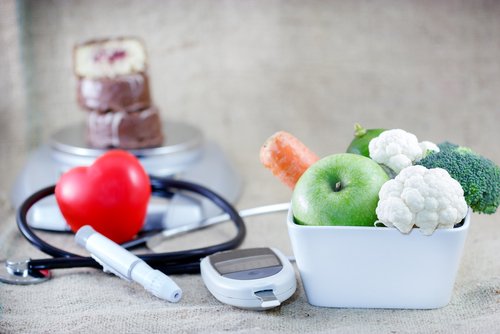
Diabetes and diabetes-related health problems are increasing in the world and in our country. For this reason, 14 November is celebrated as World Diabetes Day in the world with various activities and it is aimed to raise awareness in this sense.
1- What is fasting blood sugar and postprandial blood sugar? What values are considered normal?
Fasting blood glucose is the measurement of blood glucose taken in the morning on an empty stomach after at least 10-12 hours of fasting. Normally, fasting blood sugar is below 100 mg/dl. If the fasting blood sugar is 126 mg/dl or higher, the individual has diabetes. Postprandial blood glucose is the blood glucose measurement taken 2 hours after a meal. Diabetes is diagnosed if the postprandial blood sugar is 200 mg or more.
2- What does hidden diabetes mean?
If a person’s blood sugar level is higher than normal but not high enough to diagnose diabetes, then the person is defined as pre-diabetic (hidden diabetes).
If there is pre-diabetes, fasting blood sugar is between 100-125 mg/dl or postprandial blood sugar is between 140-199 mg. While the risk of cardiovascular disease in prediabetes is 1.5 times higher, the risk of cardiovascular disease in diabetes is 2-4 times higher.
3- What is sugar loading? When is sugar loading done during pregnancy?
In the OGTT, an individual’s blood glucose is measured after fasting and half, 1, and 2 hours after drinking a glucose-rich beverage. Normal blood sugar is below 140 mg/dl in the 2nd hour. Pre-diabetes is diagnosed if the blood glucose level is between 140-199 mg/dl in the second hour, and diabetes is diagnosed if the blood glucose level in the second hour is above 200 mg/dl.
In order to diagnose diabetes in pregnant women, a glucose tolerance test should be performed at the 24th gestational week (sixth pregnancy month). Tests are recommended earlier in those with a family history of diabetes, those who become pregnant at an advanced age, and those who are overweight. First, a simple screening test is done. The pregnant woman is given 50 g glucose to drink at any time of the day without looking for hunger or satiety. If the blood glucose level is below 140 mg/dl one hour later, there is no diabetes. If it is over 140 mg/dl, there is a suspicion of diabetes. To clarify this situation, it is necessary to load with 100 grams of glucose for 3 hours. In the three-hour glucose tolerance test, the fasting blood glucose should be below 95 mg/dl, the first hour blood glucose should be below 180 mg/dl, the second hour blood glucose should be below 155 mg/dl and the third hour blood glucose should be below 140 mg/dl. If two of these values are more than two, a diagnosis of gestational diabetes is made
4- Is there a permanent cure for diabetes?
Type 1 diabetes patients have to use insulin because insulin deficiency is present in the body. With lifestyle changes, insulin therapy is inevitable and continuous. Type 2 diabetics can keep the disease under control for a while with a good diet and exercise, and after a while they may have to use oral diabetes medications. In some type 2 diabetes patients, oral diabetes medications are insufficient and they need to use insulin. If prediabetes patients diet and exercise, they can return to the normal metabolic state, if they do not pay attention, diabetes develops.
If diabetes is due to a temporary pancreatic disease, when that disease gets better, sugar can also normalize. Or if the high sugar level is due to the use of certain drugs (such as cortisone), the sugar level becomes normal when the use of that drug is terminated.
5- Insulin is used when it exceeds which value?
If blood sugar levels are still high despite the diabetes medications and diet used in appropriate doses and types, insulin should be used. The laboratory value used to make the decision is the hemoglobin A1C test, which is usually called the 3-month sugar average. The normal for this test is below 6%. A value between 6-7% indicates good control, 7-8% is not good control, and above 8% requires a change in treatment. If there is no option to use oral medication, it is necessary to switch to insulin above 8%.

